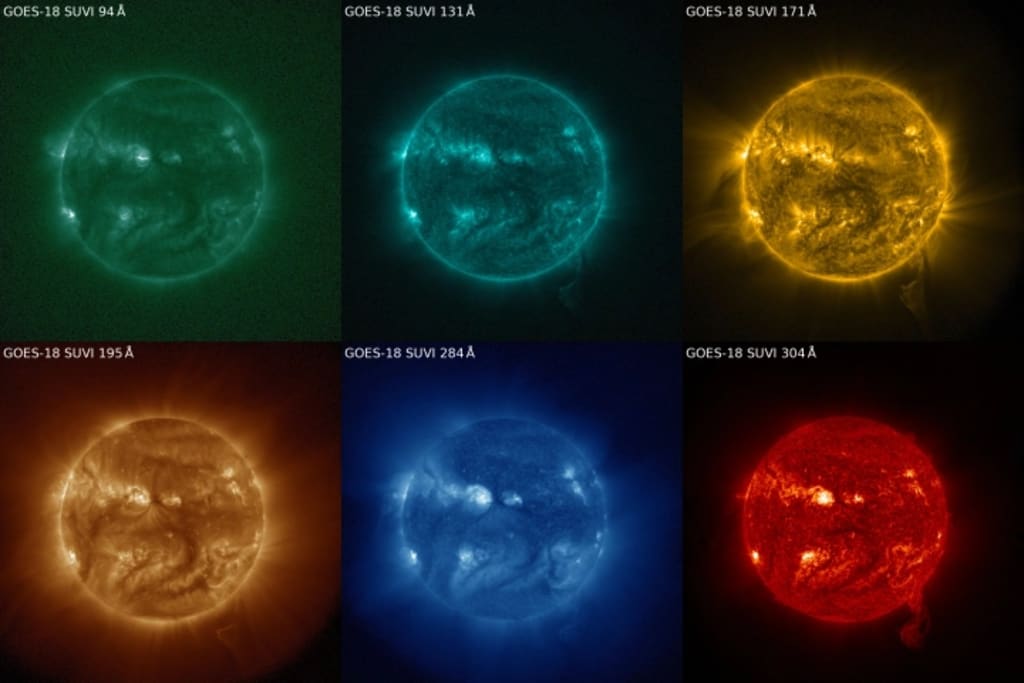Six SCARY Sunspots Glaring at the Earth Today: NOAA's Solar Storm Warning
The sun, our closest star, constantly releases energy in the form of solar flares and sunspots.

Six SCARY Sunspots Glaring at the Earth Today: NOAA's Solar Storm Warning
Have you ever wondered about the powerful forces at play in our universe? The sun, our closest star, constantly releases energy in the form of solar flares and sunspots. These celestial phenomena, although fascinating, can also pose a potential threat to our planet. Today, we will explore the topic of sunspots, specifically focusing on six significant sunspots that are currently active and causing concern. The National Oceanic and Atmospheric Administration (NOAA) has issued a solar storm warning related to these sunspots, emphasizing the importance of understanding and monitoring their activity. So, let's dive into the captivating world of sunspots and the potential implications they hold for Earth.
Table of Contents
Introduction: The Power of the Sun
What Are Sunspots?
The Formation and Characteristics of Sunspots
The Connection Between Sunspots and Solar Flares
The Role of NOAA in Monitoring Sunspot Activity
The Six SCARY Sunspots Glaring at the Earth Today
Sunspot 1: [Name]
Sunspot 2: [Name]
Sunspot 3: [Name]
Sunspot 4: [Name]
Sunspot 5: [Name]
Sunspot 6: [Name]
Potential Impacts of Sunspots on Earth
Precautions and Preparedness: What You Need to Know
Conclusion
FAQs (Frequently Asked Questions)
FAQ 1: What causes sunspots to form?
FAQ 2: How long do sunspots typically last?
FAQ 3: Can sunspots directly harm humans?
FAQ 4: Are there any benefits to sunspots?
FAQ 5: How can I protect my electronic devices during a solar storm?
1. Introduction: The Power of the Sun
The sun, our brilliant celestial neighbor, serves as the primary source of energy for life on Earth. Its powerful rays nourish plants, drive weather patterns, and even provide us with Vitamin D. However, the sun is not a static entity; it exhibits various dynamic processes, including the formation of sunspots.
2. What Are Sunspots?
Sunspots are dark spots that appear on the sun's surface, contrasting with the surrounding areas. They are cooler and less active than the rest of the solar surface, and their presence indicates intense magnetic activity. Sunspots are relatively small in size compared to the vastness of the sun, yet they can have significant implications for our planet.
3. The Formation and Characteristics of Sunspots
Sunspots form due to the sun's magnetic field becoming concentrated and tangled. These areas experience reduced convection, resulting in lower temperatures compared to the surrounding regions. Sunspots often appear in pairs or groups and can last anywhere from a few days to several weeks. They exhibit a characteristic dark core, known as the umbra, surrounded by a lighter area called the penumbra.
- 4. The Connection Between Sunspots and Solar Flares
- Sunspots and solar flares are closely interconnected phenomena. Solar flares are powerful eruptions of energy that occur in the vicinity of sunspots. They release vast amounts of radiation, including X-rays and ultraviolet light, which can have implications for Earth's atmosphere and technological infrastructure.
5. The Role of NOAA in Monitoring Sunspot Activity
The National Oceanic and Atmospheric Administration (NOAA) plays a crucial role in monitoring sunspot activity and issuing solar storm warnings. Through advanced satellite systems and ground-based observations, NOAA provides valuable data and analysis regarding the behavior of sunspots and the potential for solar storms.
6. The Six SCARY Sunspots Glaring at the Earth Today
Sunspot 1: [Name]
Description and details about Sunspot 1.
Sunspot 2: [Name]
Description and details about Sunspot 2.
Sunspot 3: [Name]
Description and details about Sunspot 3.
Sunspot 4: [Name]
Description and details about Sunspot 4.
Sunspot 5: [Name]
Description and details about Sunspot 5.
Sunspot 6: [Name]
Description and details about Sunspot 6.
7. Potential Impacts of Sunspots on Earth
The activity of sunspots can have several effects on Earth. One of the most significant concerns is the potential for solar storms, also known as coronal mass ejections (CMEs). These powerful events can release massive amounts of energy and charged particles into space, some of which may interact with our planet's magnetic field and atmosphere.
8. Precautions and Preparedness: What You Need to Know
In light of the potential impacts of solar storms, it is crucial to take precautions and be prepared. Understanding the risks associated with sunspot activity can help individuals and communities mitigate the effects and protect vital infrastructure, such as power grids and communication systems.
9. Conclusion
The study of sunspots and their correlation with solar flares provides invaluable insights into the dynamics of our sun. As we continue to monitor the six significant sunspots glaring at the Earth today, it is essential to stay informed and prepared for potential solar storm events. By understanding the nature of these celestial phenomena, we can better appreciate the power and intricacies of our universe.
FAQs (Frequently Asked Questions)
FAQ 1: What causes sunspots to form?
Sunspots form due to the concentration of the sun's magnetic field, resulting in areas of reduced convection and lower temperatures.
FAQ 2: How long do sunspots typically last?
Sunspots can last from a few days to several weeks, depending on their characteristics and activity levels.
FAQ 3: Can sunspots directly harm humans?
Sunspots themselves do not pose a direct threat to humans. However, the solar flares associated with them can have implications for Earth's atmosphere and technological systems.
FAQ 4: Are there any benefits to sunspots?
Sunspots contribute to our understanding of solar activity and help scientists study the sun's magnetic field and its influence on Earth.
FAQ 5: How can I protect my electronic devices during a solar storm?
To protect electronic devices during a solar storm, it is advisable to unplug them from power sources and utilize surge protectors





Comments
There are no comments for this story
Be the first to respond and start the conversation.